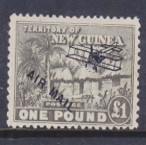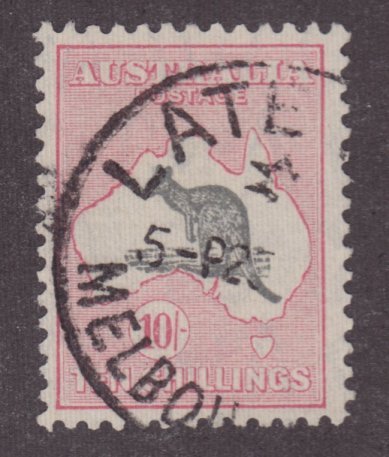
Discussion - Member to Member Sales - Research Center

Discussion - Member to Member Sales - Research Center

Wanting to know ...

Login to Like
this post
Connie,
different countries create CTOs differently. Most east bloc countries (and certainly Czechoslovakia, the country with which i have the greatest familiarity) create CTOs in two ways: machine cancelling sheets with the double-circle CDS cancel lined up quartered equally between four stamps; and FDCs with the stamps lightly affixed to paper (most of the stamp is not affixed, so it's easily removed). Because the cancels line up exactly, they're easy to spot. I think Soviet stamps, Romanian, Bulgarian, Hungarian, and others practiced similar approaches. In these countries, it's best to assume the stamp IS a CTO, unless proven otherwise.
Gum can be washed off virtually any stamp, except modern USA stamps, where most quests to remove gum end in abject despondency and the taking of Failor's name in vain. But I digress. Because most of these east bloc CTOs ARE recognizable, most don't bother taking the gum off except to make storage easier (or to remove them from stuck positions on other CTOs, like so many horny mollusks), so yes, they can appear without gum.
Think of stamps from east bloc countries and dunes as likely (almost certainly) CTOs, unless they are found on piece (non-FDC) or, better yet, cover. The period of CTO explosion is roughtly 1950 to 1990.

Login to Like
this post
Thanks. This is helpful information.

Login to Like
this post
My understanding is that that many CTOs, especially those created by the so-called Eastern Bloc countries and the Dunes, are "cancelled" as part of the printing process. In other words, the stamps aren't issued and then "overprinted" with "cancellations." Instead, the addition of the cancellation-like printing is just one step in the printing process that leads to "stamps" intended to be sold to wholesalers in the packet trade.
Some CTOs cannot be distringuished from postally used stamps, except, perhaps, by a specialist. Among these are German stamps from the post-WWI "inflation period," when German postal workers hand-cancelled stamps to sell to dealers and collectors. Since the same cancellation devices were used to cancel stamps in the mail stream, identifying one of these stamps as postally used or CTO is nearly impossible, especially in the absence of gum. The Scott catalogue notes this particular problem.
Bob Ingraham

Login to Like
this post

Besides gum on the back of a CTO, is there another way to distinguish a CTO from a postally used stamp? Might some CTO's have gum washed off? If so, can these be distinguished from postally used stamps?
Wanting to know ...

Login to Like
this post
Auctions
re: How to Determine CTOs vs postally used
Connie,
different countries create CTOs differently. Most east bloc countries (and certainly Czechoslovakia, the country with which i have the greatest familiarity) create CTOs in two ways: machine cancelling sheets with the double-circle CDS cancel lined up quartered equally between four stamps; and FDCs with the stamps lightly affixed to paper (most of the stamp is not affixed, so it's easily removed). Because the cancels line up exactly, they're easy to spot. I think Soviet stamps, Romanian, Bulgarian, Hungarian, and others practiced similar approaches. In these countries, it's best to assume the stamp IS a CTO, unless proven otherwise.
Gum can be washed off virtually any stamp, except modern USA stamps, where most quests to remove gum end in abject despondency and the taking of Failor's name in vain. But I digress. Because most of these east bloc CTOs ARE recognizable, most don't bother taking the gum off except to make storage easier (or to remove them from stuck positions on other CTOs, like so many horny mollusks), so yes, they can appear without gum.
Think of stamps from east bloc countries and dunes as likely (almost certainly) CTOs, unless they are found on piece (non-FDC) or, better yet, cover. The period of CTO explosion is roughtly 1950 to 1990.

Login to Like
this post

re: How to Determine CTOs vs postally used
Thanks. This is helpful information.

Login to Like
this post

re: How to Determine CTOs vs postally used
My understanding is that that many CTOs, especially those created by the so-called Eastern Bloc countries and the Dunes, are "cancelled" as part of the printing process. In other words, the stamps aren't issued and then "overprinted" with "cancellations." Instead, the addition of the cancellation-like printing is just one step in the printing process that leads to "stamps" intended to be sold to wholesalers in the packet trade.
Some CTOs cannot be distringuished from postally used stamps, except, perhaps, by a specialist. Among these are German stamps from the post-WWI "inflation period," when German postal workers hand-cancelled stamps to sell to dealers and collectors. Since the same cancellation devices were used to cancel stamps in the mail stream, identifying one of these stamps as postally used or CTO is nearly impossible, especially in the absence of gum. The Scott catalogue notes this particular problem.
Bob Ingraham

Login to Like
this post

